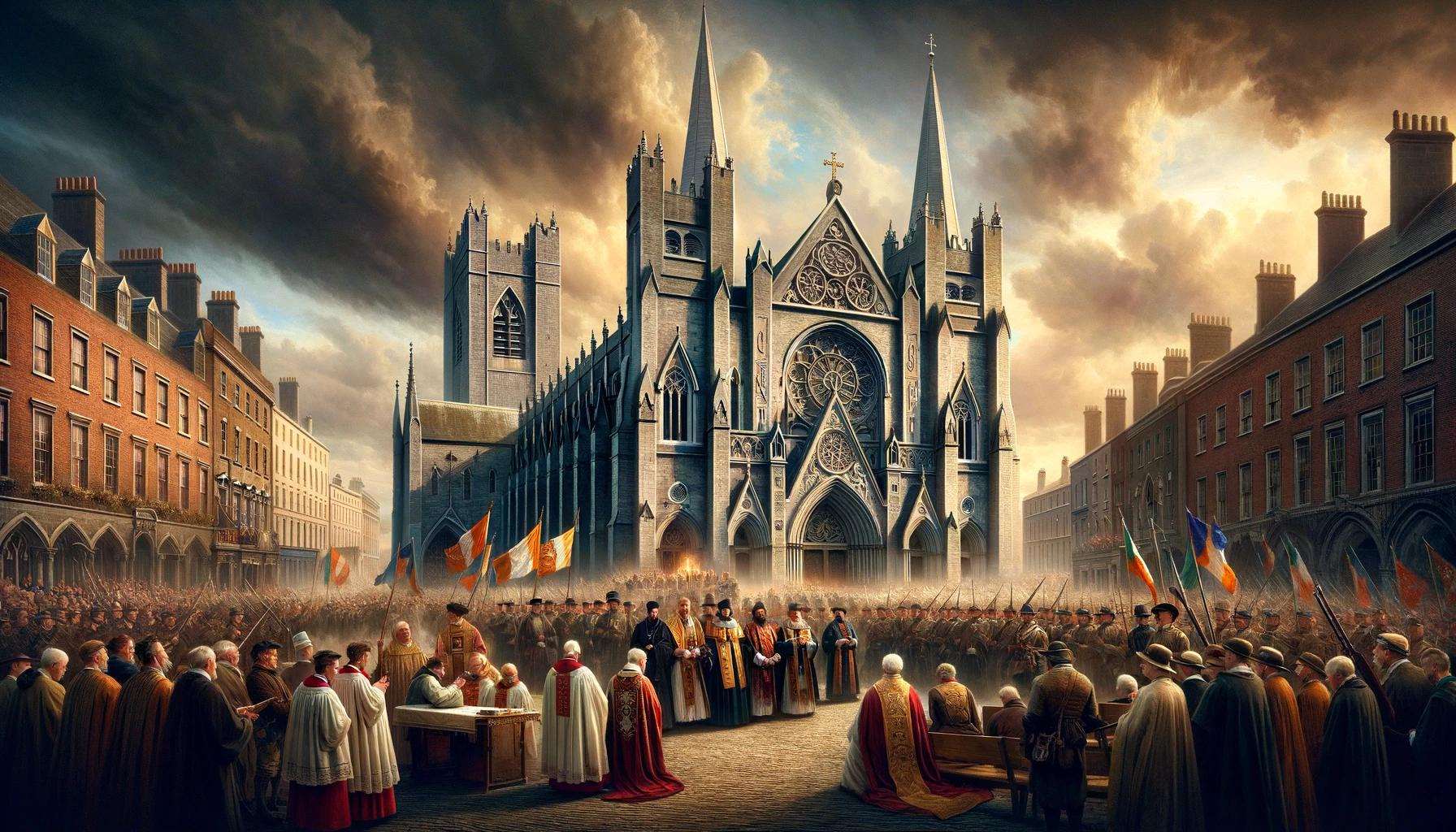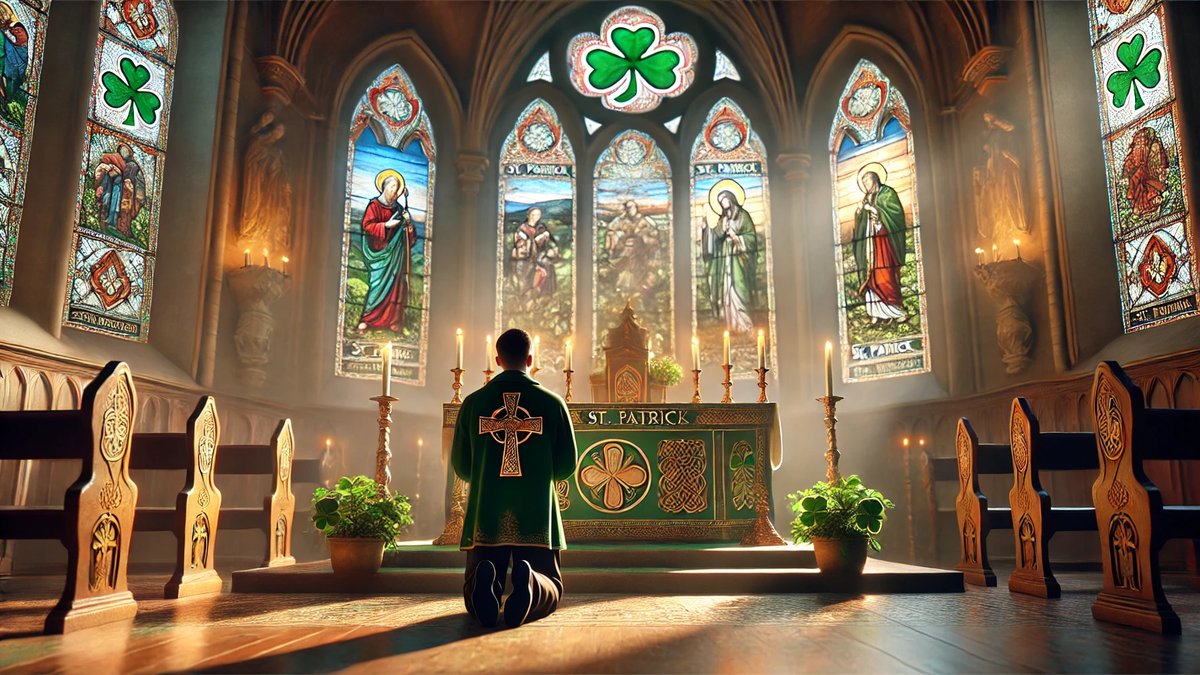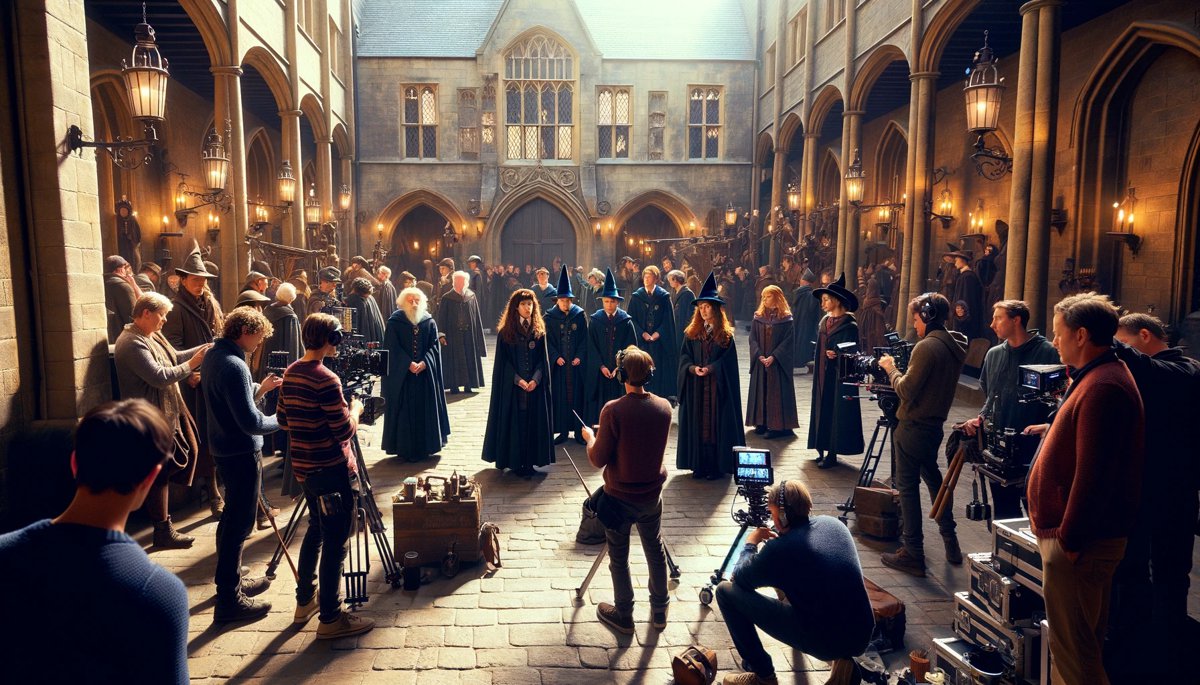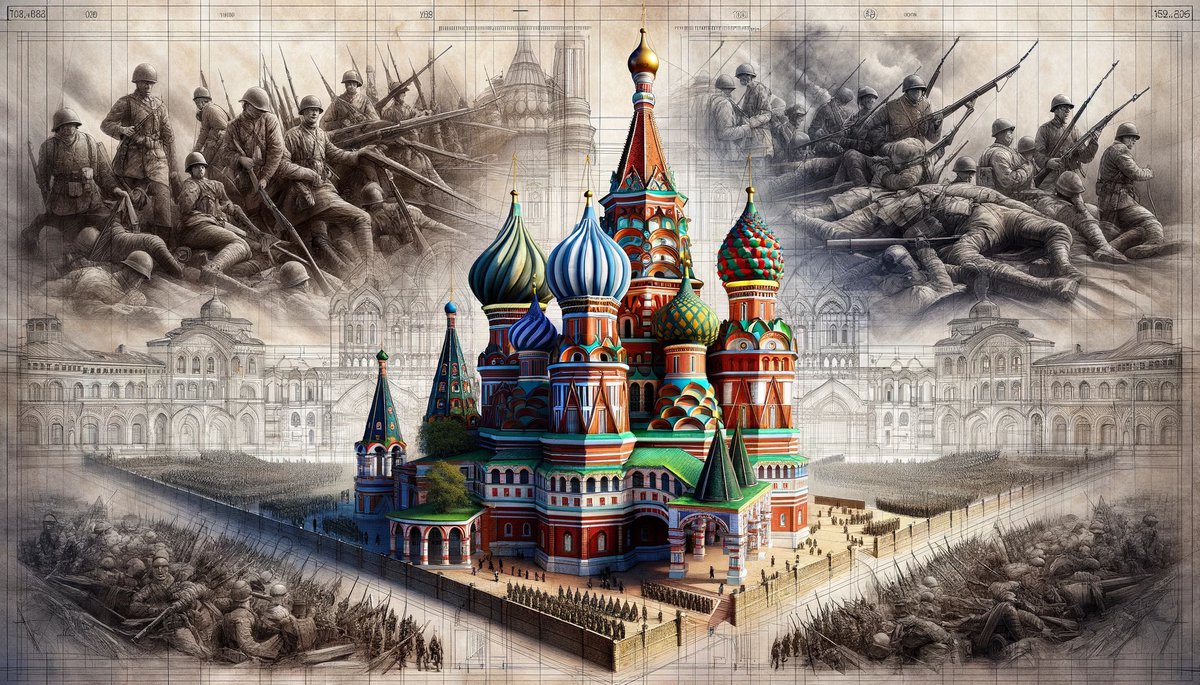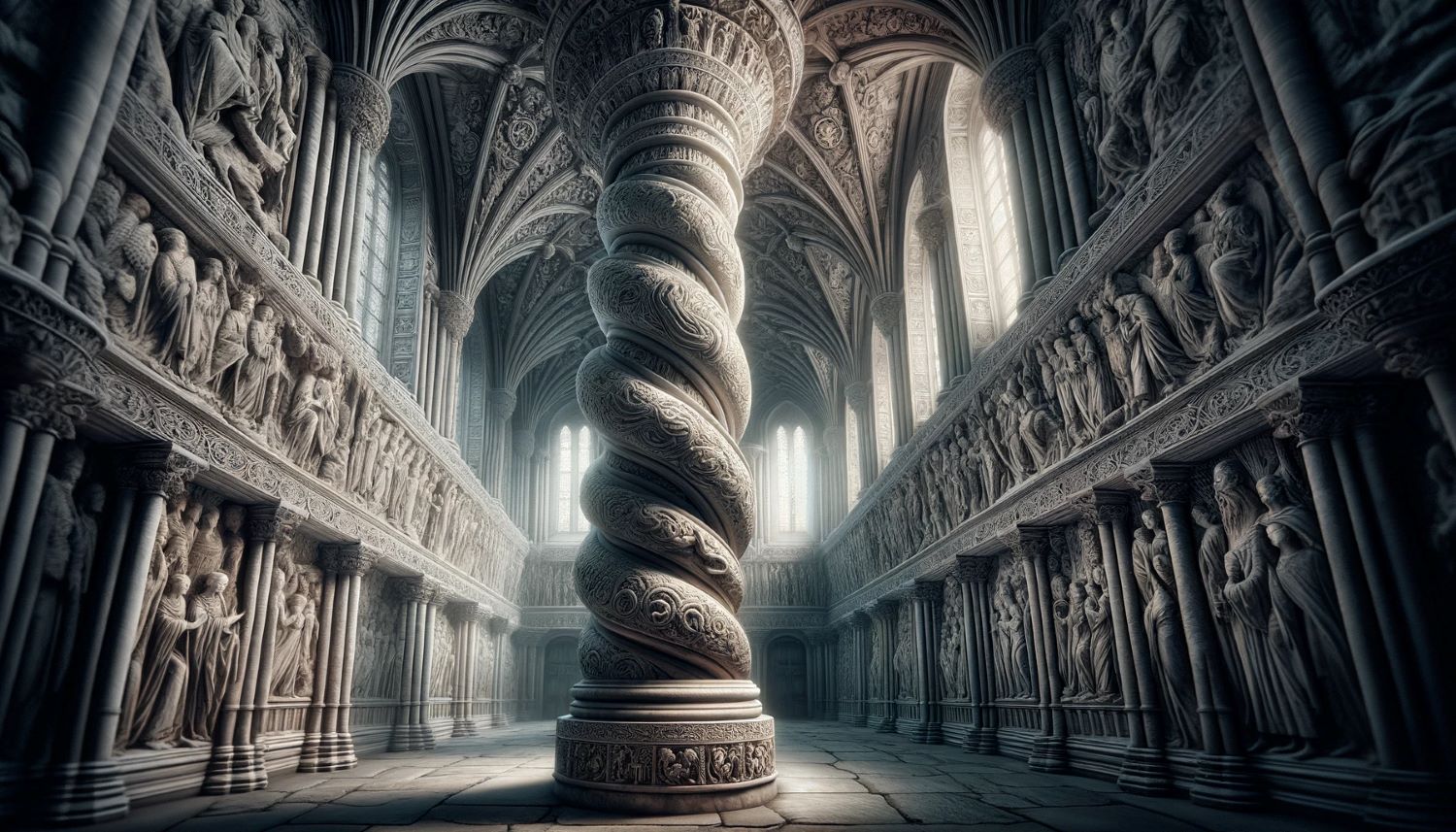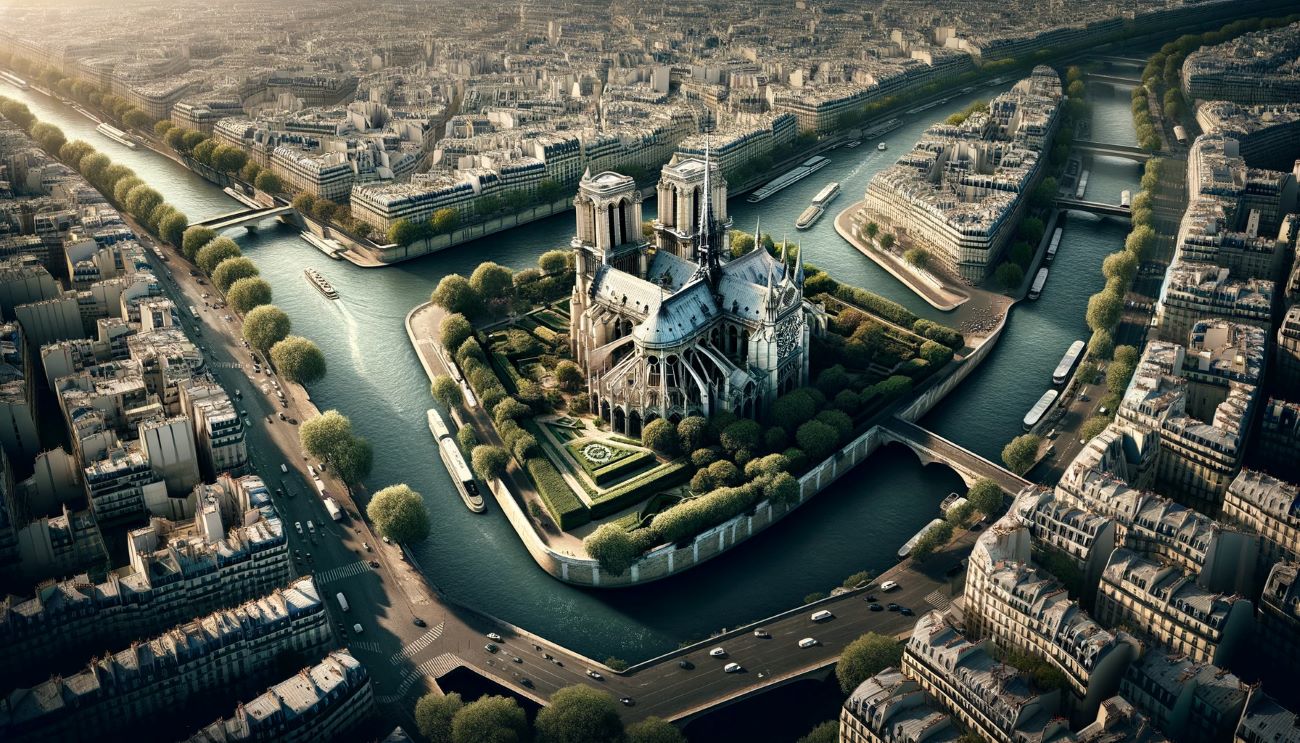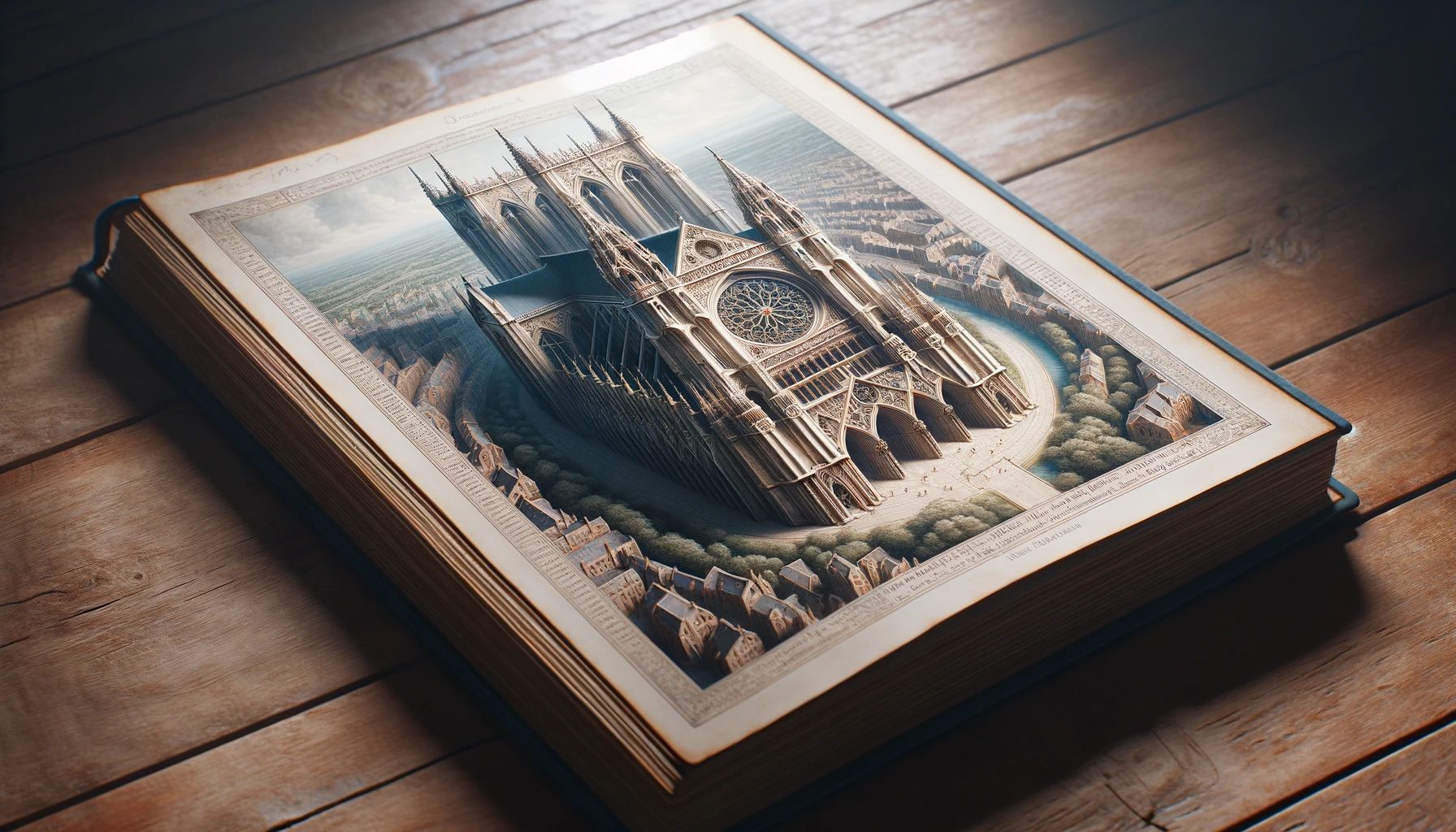Home>Arts and Culture>Why Is St. Patrick’s Cathedral Famous


Arts and Culture
Why Is St. Patrick’s Cathedral Famous
Published: February 16, 2024
Ericka Andersen, an editor at Christian.net, expertly merges digital strategy with content creation, focusing on faith and societal issues. Her communication skills enhance the platform's engaging narratives, fostering meaningful dialogue on belief's impact on society.
Discover why St. Patrick's Cathedral is renowned for its stunning architecture and rich cultural significance in the world of arts and culture. Uncover the history and beauty of this iconic landmark.
(Many of the links in this article redirect to a specific reviewed product. Your purchase of these products through affiliate links helps to generate commission for Christian.net, at no extra cost. Learn more)
Table of Contents
Introduction
St. Patrick's Cathedral stands as a majestic symbol of faith, history, and architectural grandeur in the heart of New York City. This iconic landmark, dedicated to the patron saint of Ireland, St. Patrick, holds a revered place in the hearts of both locals and visitors from around the world. Its towering spires and intricate facades beckon all who behold it to marvel at its timeless beauty and significance.
As one of the most renowned and beloved cathedrals globally, St. Patrick's Cathedral serves as a testament to the enduring power of human creativity and devotion. Its rich history, architectural splendor, and cultural significance have solidified its place as a cherished treasure, drawing countless individuals to its hallowed halls each year.
The cathedral's profound impact extends far beyond its religious significance, as it embodies the spirit of resilience and unity that has come to define New York City. With its awe-inspiring presence and storied past, St. Patrick's Cathedral continues to captivate the hearts and minds of all who encounter its magnificence.
History of St. Patrick's Cathedral
St. Patrick's Cathedral has a storied history that traces back to the mid-19th century. The idea for a grand cathedral in New York City was conceived as a response to the rapidly growing Catholic population in the area. In 1850, Archbishop John Hughes proposed the construction of a new cathedral that would not only serve as a place of worship but also stand as a testament to the strength and vitality of the Catholic faith in America.
The cathedral's construction commenced in 1858, led by architect James Renwick Jr., who envisioned a structure that would rival the grand cathedrals of Europe. However, due to the outbreak of the Civil War, the construction was put on hold, only to resume in 1865. It took over two decades to complete the cathedral, with its cornerstone laid in 1858 and the dedication taking place in 1879.
The cathedral's architectural style is a stunning example of the Gothic Revival, characterized by its pointed arches, ribbed vaults, and soaring spires. The intricate details of the facade, including the stunning rose window and elaborate carvings, reflect the dedication and craftsmanship of the artisans who brought Renwick's vision to life.
Throughout its history, St. Patrick's Cathedral has witnessed significant moments, including the funeral Mass for President John F. Kennedy in 1963 and the visit of Pope Paul VI in 1965. These events have further solidified the cathedral's place as a historic and cultural landmark, transcending its religious significance to become a symbol of unity and resilience.
Today, St. Patrick's Cathedral stands as a testament to the enduring legacy of faith and artistry, welcoming visitors from all walks of life to admire its timeless beauty and immerse themselves in its rich history. The cathedral's significance extends beyond its religious roots, serving as a beacon of hope and inspiration for all who pass through its magnificent doors.
Architectural Significance
St. Patrick's Cathedral stands as a paragon of architectural brilliance, captivating all who behold its awe-inspiring structure. The cathedral's architectural significance lies not only in its stunning visual appeal but also in the meticulous craftsmanship and historical context that define its construction.
Designed in the Gothic Revival style by renowned architect James Renwick Jr., the cathedral's exterior is a testament to the intricate artistry of the era. Its imposing spires, pointed arches, and elaborate carvings evoke a sense of grandeur and timelessness, drawing parallels to the great cathedrals of Europe. The facade's intricate details, including the mesmerizing rose window and ornate sculptures, showcase the unparalleled skill of the craftsmen who dedicated themselves to bringing Renwick's vision to life.
The interior of St. Patrick's Cathedral is equally breathtaking, with its soaring vaulted ceilings, delicate stained glass windows, and ornate altars. The play of light and shadow through the stained glass creates a transcendent atmosphere, inviting visitors to immerse themselves in the cathedral's serene beauty. Every architectural element within the cathedral, from the meticulously carved wooden pews to the majestic organ, reflects a harmonious blend of art and faith.
Beyond its visual splendor, the architectural significance of St. Patrick's Cathedral lies in its enduring resilience. Despite facing challenges such as the Civil War and the passage of time, the cathedral has stood as a steadfast symbol of faith and fortitude. Its restoration efforts in the late 20th century further underscored the commitment to preserving its architectural legacy for future generations to cherish.
As a cultural and historical landmark, St. Patrick's Cathedral continues to inspire awe and reverence, serving as a living testament to the enduring power of human creativity and devotion. Its architectural significance transcends mere aesthetics, embodying the spirit of faith, artistry, and resilience that has left an indelible mark on the fabric of New York City and the world at large.
Role in New York City
St. Patrick's Cathedral holds a pivotal role in the cultural, historical, and spiritual tapestry of New York City. As one of the city's most iconic landmarks, the cathedral serves as a beacon of unity, resilience, and inspiration for both residents and visitors alike.
From a cultural perspective, St. Patrick's Cathedral stands as a testament to the enduring legacy of architectural and artistic achievement in New York City. Its imposing spires and intricate facades contribute to the city's skyline, adding a touch of timeless elegance to the bustling urban landscape. The cathedral's Gothic Revival architecture, reminiscent of the great cathedrals of Europe, serves as a reminder of the city's rich cultural heritage and its embrace of diverse artistic traditions.
Historically, St. Patrick's Cathedral has borne witness to significant events that have shaped the course of New York City's narrative. Its construction during the mid-19th century coincided with a period of rapid growth and transformation in the city, symbolizing the burgeoning influence of the Catholic community. Over the years, the cathedral has hosted momentous occasions, including the funeral Mass for President John F. Kennedy and the visit of Pope Paul VI, further cementing its place in the annals of New York City's history.
Spiritually, St. Patrick's Cathedral serves as a sanctuary of solace and reflection amidst the bustling metropolis. Its hallowed halls offer a respite from the frenetic pace of city life, providing a sacred space for individuals of all backgrounds to seek solace, contemplation, and spiritual nourishment. The cathedral's role as a place of worship and pilgrimage underscores its significance as a spiritual cornerstone within the heart of New York City.
Moreover, St. Patrick's Cathedral plays a vital role in fostering a sense of community and inclusivity within the city. Its doors are open to all, welcoming individuals from diverse walks of life to partake in its beauty and tranquility. The cathedral's outreach programs, charitable initiatives, and cultural events further contribute to its role as a unifying force, bringing people together in celebration of shared values and aspirations.
In essence, St. Patrick's Cathedral stands as a living testament to the enduring spirit of New York City, embodying the city's cultural richness, historical significance, and unwavering commitment to unity and inclusivity. Its role as a cherished symbol of faith, artistry, and community underscores its profound impact on the fabric of New York City, making it an indispensable cornerstone of the city's identity.
Religious and Cultural Importance
St. Patrick's Cathedral holds profound religious and cultural significance, serving as a revered symbol of faith, artistry, and unity. As the seat of the Archbishop of New York and a prominent center of Catholic worship, the cathedral stands as a spiritual cornerstone within the heart of the city. Its significance transcends religious boundaries, embracing individuals from diverse cultural backgrounds and beliefs, fostering a spirit of inclusivity and reverence.
From a religious standpoint, St. Patrick's Cathedral stands as a sacred sanctuary where the faithful gather to seek solace, inspiration, and communion with the divine. Its hallowed halls, adorned with exquisite religious iconography and sacred artifacts, provide a sacred space for prayer, reflection, and spiritual nourishment. The celebration of Mass, sacraments, and religious ceremonies within the cathedral's sacred confines further underscores its role as a vibrant center of Catholic worship, drawing pilgrims and parishioners from near and far to partake in its timeless traditions.
Culturally, St. Patrick's Cathedral represents a testament to the enduring legacy of artistic and architectural achievement. Its Gothic Revival architecture, characterized by soaring spires, intricate carvings, and majestic stained glass windows, reflects a harmonious blend of faith and artistry. The cathedral's cultural significance extends beyond its religious affiliations, captivating admirers of diverse backgrounds who are drawn to its timeless beauty and historical resonance.
Moreover, St. Patrick's Cathedral serves as a cultural hub, hosting a myriad of events, concerts, and exhibitions that celebrate the intersection of art, music, and spirituality. Its role as a venue for cultural enrichment and artistic expression underscores its commitment to fostering a vibrant and inclusive cultural community within New York City.
The cathedral's outreach initiatives, including educational programs, guided tours, and community engagement efforts, further exemplify its dedication to enriching the cultural tapestry of the city. By opening its doors to individuals of all faiths and backgrounds, St. Patrick's Cathedral embodies a spirit of inclusivity and cultural exchange, fostering a sense of unity and understanding among diverse communities.
In essence, St. Patrick's Cathedral's religious and cultural importance transcends its physical presence, embodying the enduring spirit of faith, artistry, and community. Its role as a revered center of worship and cultural enrichment underscores its profound impact on the fabric of New York City, making it an indispensable symbol of unity, inspiration, and cultural heritage.
Read more: Why Is St. Paul’s Cathedral Famous
Notable Events and Visitors
St. Patrick's Cathedral has borne witness to a myriad of notable events and welcomed distinguished visitors, leaving an indelible mark on its storied legacy. Throughout its rich history, the cathedral has served as the backdrop for significant occasions that have resonated far beyond its hallowed walls, solidifying its place as a cultural and historical landmark of global significance.
One of the most iconic events in the cathedral's history was the solemn and historic funeral Mass for President John F. Kennedy in 1963. The cathedral provided a solemn and dignified setting for the nation to mourn the untimely loss of a beloved leader. The somber yet poignant ceremony, attended by dignitaries and mourners from around the world, underscored the cathedral's role as a place of national significance, transcending its religious affiliations to become a symbol of unity and remembrance.
In 1965, St. Patrick's Cathedral welcomed a momentous visitor in the form of Pope Paul VI, marking the first visit of a reigning pontiff to the United States. The historic occasion drew throngs of faithful and admirers to the cathedral, where the Pope delivered a stirring address, emphasizing the importance of peace, unity, and compassion. His visit not only reaffirmed the cathedral's status as a revered center of Catholic worship but also highlighted its global significance as a venue for historic and transformative events.
Over the years, St. Patrick's Cathedral has continued to host a diverse array of events, including concerts, religious ceremonies, and cultural celebrations. Its majestic interior and awe-inspiring acoustics have provided the perfect setting for musical performances by renowned artists and orchestras, captivating audiences with the transcendent power of music within its sacred confines.
The cathedral has also welcomed numerous heads of state, dignitaries, and public figures, further solidifying its role as a venue for diplomacy, dialogue, and cultural exchange. From solemn state funerals to moments of celebration and reflection, St. Patrick's Cathedral has stood as a timeless witness to the ebb and flow of history, embracing individuals from all walks of life and offering a sanctuary for collective remembrance and reverence.
In essence, the notable events and visitors that have graced St. Patrick's Cathedral have left an indelible imprint on its legacy, underscoring its role as a cherished symbol of unity, cultural enrichment, and historical resonance. The cathedral's ability to host transformative events and welcome esteemed visitors reflects its enduring significance as a beacon of faith, artistry, and communal spirit, perpetuating its timeless allure for generations to come.
Conclusion
In conclusion, St. Patrick's Cathedral stands as a testament to the enduring power of faith, artistry, and community, weaving together a rich tapestry of history, culture, and spiritual significance. From its humble beginnings in the mid-19th century to its status as a revered global landmark, the cathedral has transcended its religious affiliations to become an enduring symbol of unity, resilience, and inspiration.
The cathedral's rich history, characterized by moments of triumph and tribulation, reflects the indomitable spirit of human creativity and devotion. Its architectural significance, exemplified by the awe-inspiring Gothic Revival design and meticulous craftsmanship, continues to captivate admirers from around the world, serving as a beacon of cultural and artistic achievement.
Moreover, St. Patrick's Cathedral's role in New York City extends far beyond its religious significance, as it embodies the city's cultural richness, historical resonance, and unwavering commitment to inclusivity. As a cherished symbol of faith and community, the cathedral has provided solace, inspiration, and a sense of belonging to countless individuals, fostering a spirit of unity and understanding within the bustling metropolis.
The cathedral's religious and cultural importance further underscores its profound impact on the fabric of New York City, serving as a sanctuary for spiritual nourishment, artistic expression, and communal celebration. Its outreach initiatives and inclusive ethos have solidified its role as a unifying force, bringing together individuals from diverse backgrounds to partake in its timeless traditions and cultural offerings.
In essence, St. Patrick's Cathedral's enduring legacy is a testament to the enduring spirit of faith, artistry, and community, perpetuating its timeless allure for generations to come. As it continues to stand as a revered symbol of unity and inspiration, the cathedral invites all to bask in its timeless beauty, seek solace within its hallowed halls, and partake in the collective celebration of human creativity and devotion.




